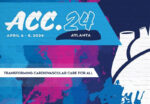For patients undergoing myocardial revascularization surgery, endoscopic harvesting of saphenous veins in expert hands is similar to traditional methods in terms of events, according to this study presented at the American Heart Association (AHA) Congress and published simultaneously in the New England Journal of Medicine (NEJM). This study, called REGROUP, was able to demonstrate that...
Myocardial Revascularization Surgery Hits a Plateau
Hopes were raised high by the ARTS study, when set to show the benefit of bilateral internal mammary arteries (BIMA) during coronary artery bypass graft surgery compared over the use of a single internal mammary artery (SIMA) at 10 year follow up, but only one sub-study was able to show an advantage over radial grafts....
Additional Benefit from Radial Artery Graft in Myocardial Revascularization Surgery
Used to different extents according to institution, surgeon, and historical time, the radial artery graft is yet to prove whether it can improve the outcomes of myocardial revascularization surgery when added to a single or bilateral internal thoracic artery graft. The ART (Arterial Revascularization Trial) was designed to compare survival after bilateral vs. single left internal...
Myocardial Revascularization Surgery: One or Two Internal-Thoracic-Artery Grafts?
The use of both internal thoracic (mammary) arteries for myocardial revascularization surgery might improve long-term outcomes, compared with the use of a single internal thoracic artery. Patients scheduled for myocardial revascularization surgery (only multivessel procedures; combined valve procedures were excluded) were randomized to receive a single internal-thoracic-artery graft (internal thoracic artery for the anterior...
Non-ST-Segment Elevation Myocardial Infarction in Elderly Patients
The world population is aging, and cardiovascular diseases are the leading cause of death in Western countries. It is increasingly common to find patients aged 70 or older with non-ST-segment elevation acute myocardial infarction (NSTEMI). However, this group has been excluded from most studies, and there is not enough information to determine whether a conservative...
Acute Myocardial Infarction After TAVI: Retrospective Analysis of >200,000 Implants
Coronary artery disease is common among patients considered for transcatheter aortic valve implantation (TAVI). With the expansion of the indication for TAVI to a population with lower surgical risk, and therefore younger, there has been a gradual increase in the incidence of coronary events. However, there is limited data on treatment strategy and outcomes in...
EXCEL Study: Complete vs. Incomplete Revascularization
Regardless of whether it is attempted through percutaneous coronary intervention (PCI) or myocardial revascularization surgery (MRS), complete revascularization (CR) is not always achieved. Overall, it is more frequent with surgery than with percutaneous treatment. Additionally, incomplete revascularization (IR) has proven to be associated with worse outcomes compared to CR. Researchers conducted an analysis of the...
ACC 2024 | REDUCE AMI: Beta-Blockers after Myocardial Infarction and Preserved Ejection Fraction
Most clinical trials have shown benefits of beta blockers after acute myocardial infraction, including patients with extensive AMI, and these were carried out in the era before AMI was diagnosed with biomarkers and prior to treatment with coronary angioplasty, use of antithrombotic agents and high intensity statins, and angiotensin-aldosterone system inhibitors. The aim of this...
Sub-Analysis of the REVIVED-BCIS2: Myocardial Viability Changes Prognosis in Ischemic Cardiomyopathy Revascularization?
The purpose of myocardial viability testing is to identify patients that might benefit from revascularization by diagnosing three types of myocardium: normal, viable or hibernating, and scarred (non-viable). Non-randomized studies have shown recovery of a viable ventricle after myocardial revascularization surgery (CABG) and improved survival. However, a sub-analysis of the main study on viability testing,...
Long-Term Results from the BEST Study: Drug-Eluting Stents vs. Bypass Surgery in Diabetic Patients with Multiple Vessel Disease
The impact of diabetes on the development of cardiovascular disease is widely known, with a strong association with extensive and diffuse coronary artery disease. Decision-making regarding how to revascularize patients with multi-vessel disease is a complex process. In this context, coronary artery bypass grafting (CABG) has been recommended over percutaneous coronary intervention (PCI) based on...









